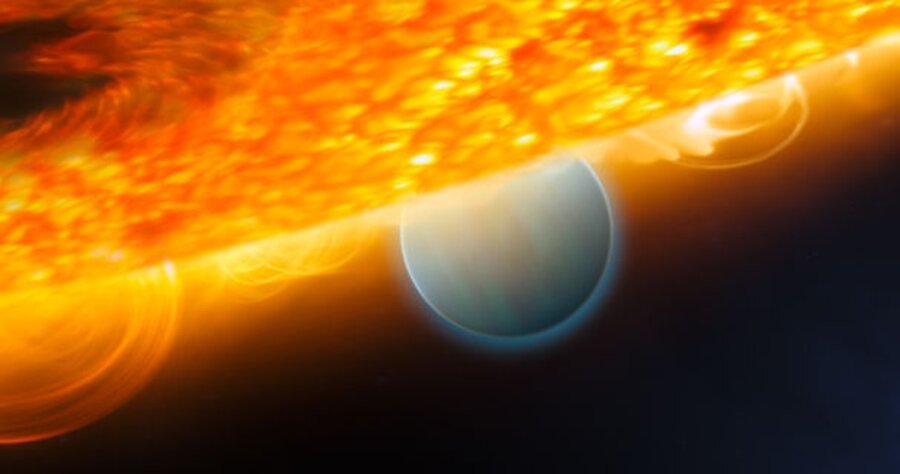Astronomer finds CO2 in exoplanet's atmosphere
Loading...
Planet hunting is a real gas.
Using the Hubble Space Telescope, an astronomer at the National Aeronautics and Space Administration's Jet Propulsion Laboratory says he has detected carbon dioxide and carbon monoxide in the atmosphere of a Jupiter-sized planet orbiting a star 63 light-years from Earth. The planet and its host star are part of the constellation Vulpecula.
The planet, tagged HD 189733b, has become a poster child for probing the atmospheres of distant planets. Over the past year or so, astronomers have detected methane and water vapor in its atmosphere as well.
The excitement surrounding Tuesday's announcement stems from the fact that CO2, as well as methane, can have biological origins as well as geological origins. Critters are highly unlikely to be the source on HD 189733b, scientists emphasize. The planet's too hot; it's so close to its host star that it orbits once every 2.2 Earth days.
Still, this development points to scientists' increasing ability to decipher clues to an expolanet's composition and processes through the study of its atmosphere. Combined with new tools for Earthbound telescopes, such as one announced this week by scientists at the University of Hawaii and their colleagues, efforts to study solar systems beyond our own are snowballing.
Researchers announced the discovery of HD 189733b in October 2005. They watched for changes in the system's brightness as the planet's orbit takes it across the face of the star, as seen from Earth. During each transit, the star dims slightly as the planet passes in front. Follow-up observations confirmed the discovery.
This same general technique was used to spot atmospheric gases. The star's chemical make-up is revealed in its spectrum. That spectrum's composition changes as the planet passes in front of it.
JPL researcher Mark Swain subtracted the star's spectra from the combined spectra taken as the planet transits and found the chemical fingerprint of CO2 in the planet's atmosphere.
Yet advances in exoplanet studies aren't coming just from orbiting telescopes.
This week, a team at the University of Hawaii, MIT, and Georgia Tech described a new camera, dubbed OPTIC. It's designed to detect transiting planets around stars far more distant than HD 189733b's. In a paper scheduled for publication in Astrophysical Journal Letters, they describe the results when they turned the camera loose on the exoplanet WASP-10b.
No Monstro the Killer Telescope, here. Their detector is bolted to a decidedly modest-size 2.2-meter 'scope.
WASP-10b lies 300 light-years from Earth, and it tips the scales and 3.3 times Jupiter's mass. The main result for now: They report that the planet is 16 percent smaller than previous estimates had indicated. This makes it one of the most dense exoplanets known.
Over the long haul, the camera's high precision should make it possible to detect transiting planets that are earth-sized. And that generates some of its own excitement, notes John Johnson, the lead author on the soon-to-be-published results.
With Earthlike exoplanets, the change in light as the planet transits its star "gives you a great deal of information about the interior structure of the planet," Dr. Johnson writes in an e-mail. "There are only so many ways to combine rock, water ice, and gas to produce an observed radius. So for Earth-like transiting planets, we'll be able to distinguish between those covered in a thick layer of water and those covered with desertlike surfaces, for example."
Too cool!





